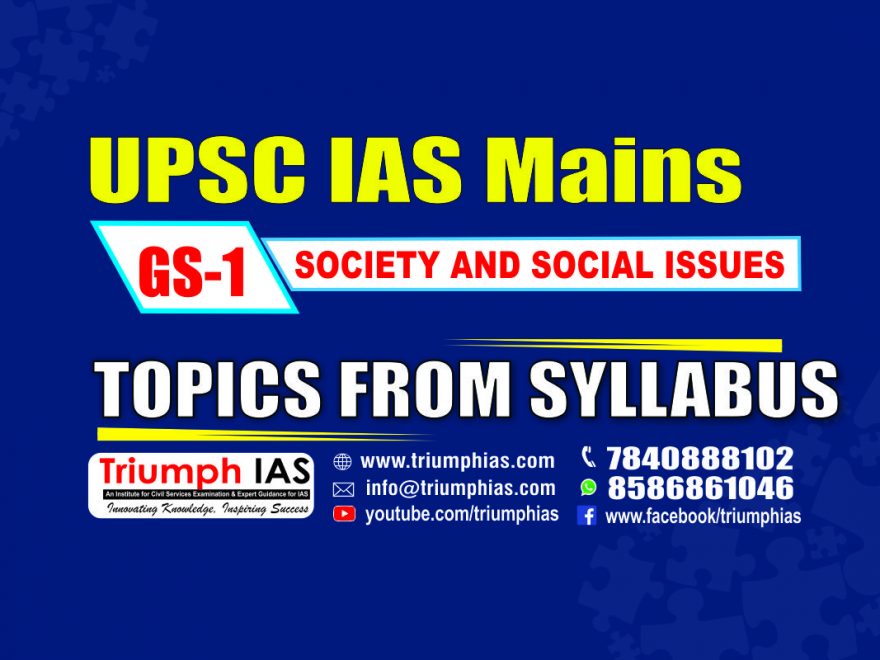Relevance: Mains: G.S paper I: Society: Urban planning
Introduction
- Mobility is increasingly circular, semi or non-permanent. Although a bulk of it is regional, many stream of migration are also long-distance and interstate.
• This dynamic situation of mobility is at variance with public policies in cities that are being transformed by the presence of and contribution of these migrants.
• This gap in public policy compels migrants to find solutions outside the formal system. Such patterns generate a vicious cycle in which both cities and migrants get trapped.
Wrong Assumptions:
- The census data estimates the number of migrants at 3.3 million. However, several studies including the Economic Survey of India 2017 suggest that this is a significant underestimation, as it tend to neglect the short-term and circular migration.
• Most urban policies, initiated at the central or state level, seemed to have overlooked the emerging forms of mobility that is largely circular and temporary.
• This has led to wrong assumptions that city dwellers are sedentary and linkages of citizenship to long-term residence do not fit this emergent form of migration.
Changing Scale and Forms of Mobility in India:
• Economic Survey of India (2016-17) places the estimation of interstate migration at 60 million and inter-district migration at 80 million.
• However, it is important to recognize that there are clear indications that mobility in India is
significantly increasing and that the forms of this mobility are varied and do not correspond to a permanent move.
• Two forms which are particularly significant are: a) commuting and b) circular migration. Both these forms of mobility have implications for the way in which cities are shaped.
How Mobility Transforms Places?
- Large-scale migration has significant implications for places. Conventional data measuring more permanent movement would estimate such implications in terms of burdens on infrastructure and housing. However, there is another aspect that is solely associated with temporary form of migration.
• Temporary forms of migrants are people who contribute to the city economy while they are there but their efforts are directed at places which they come from i.e. the source areas. This is where they contribute in terms of remittances, investments, asset building, and state revenues.
• On the other hand, they contribute significantly to the economic flows and outputs, extract less resources from the city, and bring in new ideas and ways of doing things.
• While work and economic reasons may be the largest drivers for such migration, education and health resource seeking may also be supplementary reasons for the same. These create specific demands on city infrastructures and services.
• A neglect of these needs pushes people into creating their own makeshift solutions. A road junction is then converted into an ‘adda’ with tea-food stalls, rest places, footpaths, and roads are subsequently taken over as assembly places.
• On the other hand, a proactive approach to migration can lead to significant benefits for the city economy and city vibrancy.
Need for Vision for Supporting Migrants in Urban Policy: Short-term Housing:
- Short-term housing is perhaps one of the most critical and unmet needs of migrants to Indian cities. Short-term visitors to cities include all those groups that use city as a resource.
• Needs for stays longer than hotel stays and lesser than rental housing are the most neglected.
Housing markets have begun to recognize this need and cater to it through serviced apartments.
• However, there is a complete absence of options when it comes to the low-income end. In older days, cities had dharamshalas. Contemporary Indian cities lack such options.
• The other significant barrier to creating short-term housing solutions lies in the current imagination of housing. Contemporary housing policies rest upon two broad principles – the first is ownership-based housing and other is use of land as resource.
• The first principle helps in creation of Citizenship, which in turn secures sustained commitment and investment in a place. Similarly second principle help to monitise land.
• However, a negative impact of both these policy instruments is that they limit the possibilities of short-term housing and undermine the needs for space for shelter in cities.
Way Forward:
- Only local governments with an on-ground knowledge of realities will be able to respond to above discussed challenges as opposed to State Governments who have a more top-down and
homegenising view of these issues.
• It is therefore essential to move away from the current State Govt.-based policy onus and equip local governments in terms of capacity to cognize such issues, collect data, and to possess the powers and resources to respond to dynamic phenomena such as migration.

